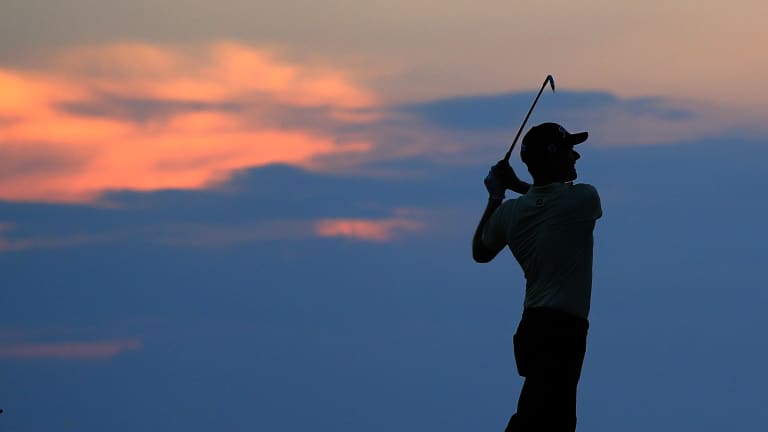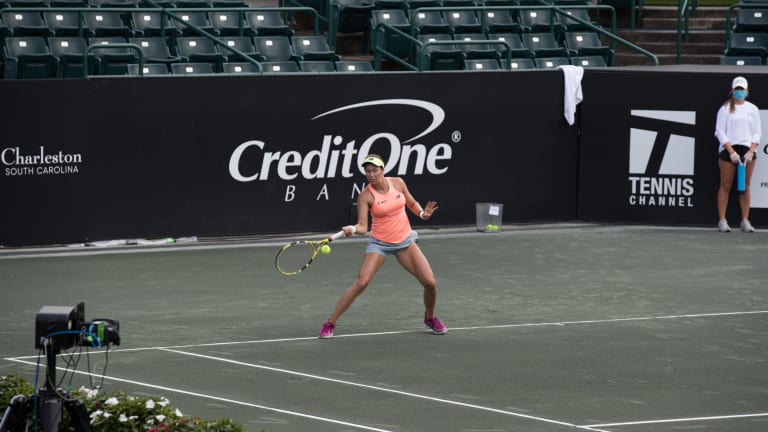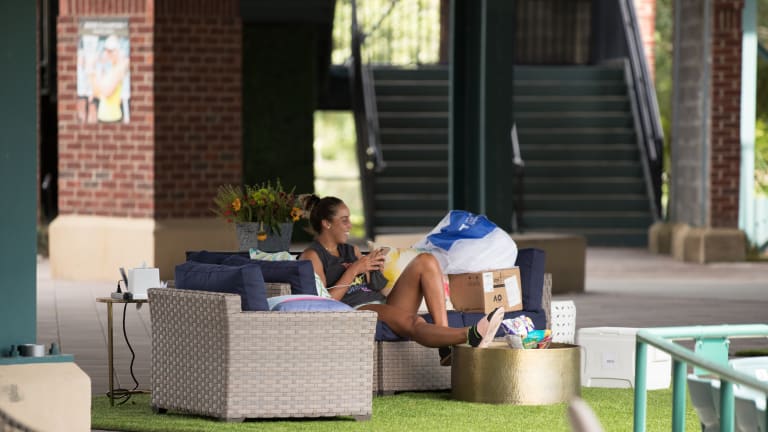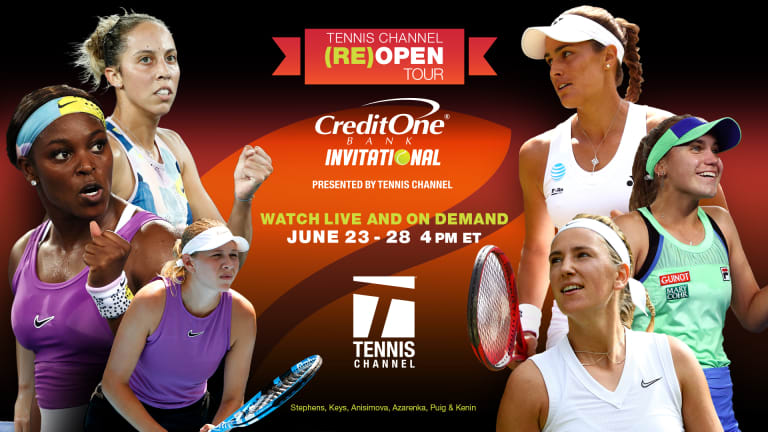No fans; players handle their own towels; masked ballpersons pick up tennis balls with a special tube: a sampling of COVID-19 protocols in place this week in Charleston. (Credit One Bank Invitational)
The word positive has never been more negative in connotation than now. But if the Credit One Bank Invitational gets it right, there are a number of positives tennis can take away from this ambitious event.
The sport has been reopening since early May, when Dustin Brown spearheaded a localized event in Höhr-Grenzhausen, Germany. The small town in the southwest is best known for its ceramic industry; pottery is proudly displayed on its coat or arms. Held at an indoor tennis club about an hour’s drive from Cologne, where Brown and others stayed, its highest-ranked player was Yannick Hanfmann, ranked 143rd on tour.
Since then, a variety of events featuring professional players have popped up in obscure locations, often at private facilities and for only a couple of days in duration. To their credit—with the notable exception of the Adria Tour—there have not appeared to be any issues with holding play safely.
Charleston, by contrast, is one of the largest cities in the southern U.S. It’s also a hotbed for women’s tennis, with its annual WTA tournament a celebration of the sport’s past, present and future. The Credit One Bank Invitational brings 16 players to Volvo Car Stadium—where the WTA tournament is annually held—for a six-day long event featuring singles and doubles competition. Australian Open champion Sofia Kenin, former US Open Sloane Stephens and a host of other highly ranked players line the prominent field. It is, without question, the height of tennis’ reopening in the U.S. to this point.
“Most of the stuff in the states has been one day or two days,” says Moran. “This is Tuesday through Sunday, with singles and doubles, with a strong cast of players. I do feel it’s significant.
“There’s going to be a different way to play the game and operate around the game. This should start to lay the groundwork of what you have to go through.”
Besides a healthy and enjoyable week of tennis, Moran hopes subsequent tournaments can take cues from the protocols that he and his team, including Ben Navarro, a local businessman who owns the Charleston tournament and its venue, have put in place.
“This event is about a few different things,” says Navarro, whose daughter, Emma, is competing this week. “It’s about hope, it’s about opportunity, and it’s about gratitude.
“I think there’s a need for us all to feel like there’s a normalcy that’s going to return to the world, and I think sports is a great way for us to demonstrate that. There’s an opportunity for the girls to come back and compete, which is exciting, and it’s a way for us to show gratitude as a community to many people to have stepped up in this crisis, in particular the health care workers.”
The Medical University of South Carolina (MUSC) is contending with the developing COVID-19 situation in the state, but it is also continuing to safeguard the Credit One Bank Invitational. It developed the event’s entire health and safety plan, which includes having players watch the action from socially distant lounges around the Volvo Car Stadium. Similar vantage points will be implemented at the US Open, with seeded players given suites around Arthur Ashe Stadium. It won’t be the only thing tournament directors will have to reimagine as part of the sport’s reopening.



